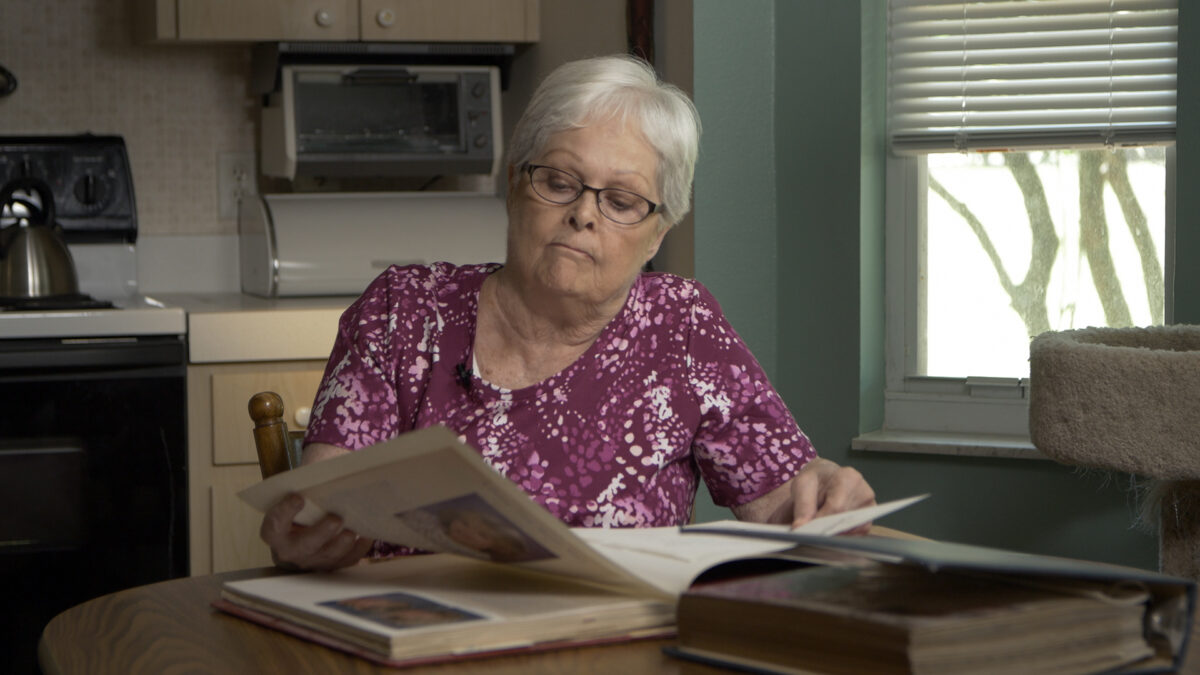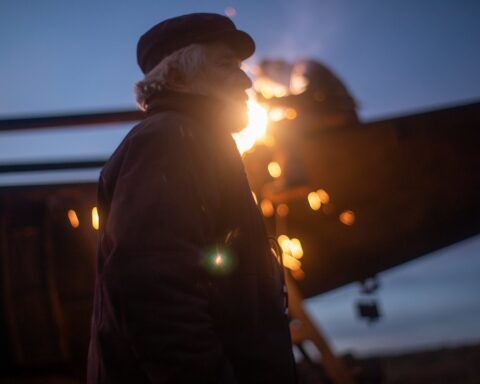Ask Michael Sparaga about television and he could easily talk through breakfast, lunch, and dinner. One leaves the conversation with a grocery list of TV shows to see. Once the seemingly endless campaign of embargoed Vimeo links ends with Hot Docs, this writer is going to have to check out shows like The Good Place, Friday Night Lights and the musical episode of Buffy, just to name a few.
True and unabashed passion is always a pleasure to encounter in a filmmaker. This enthusiasm makes Sparaga’s new film United We Fan, which has its world premiere at Hot Docs, such a joy to watch. It’s the story of fans who rallied to save their favourite TV shows and of heroes like Dorothy Swanson who took her mission to save Cagney & Lacey and transformed it into the long-running institution VQT (Viewers for Quality Television). VQT is now defunct, but Sparaga’s doc shows that fandom is more powerful than ever as fans have become influencers and harness the power of social media to fight for great TV.
Sparaga admits that he has experience participating in the letter writing campaigns that Swanson and VQT encouraged fans to pursue. The doc tells of how these aggressive campaigns show TV station executives that series at risk of cancellation have passionate fans. Sparaga’s own tale recounts writing a letter to NBC to spare Crime Story back in the 1980s and he probably single-handedly saved the show. (As any teen might think.) Sparaga can’t recall the specifics of the letter, but he remembers imploring the network that the story needed a fair ending.
“That is something I discovered—a lot of show runners are upset with how the end of their seasons forced their series to end prematurely,” observes Sparaga, “just like us fans were obviously thinking they were coming back. Fans like closure. Smart, savvy producers who know their shows are on the bubble might end a season carefully knowing it can be cancelled.” Short-lived shows like Carnivàle add a spark to the conversation as Sparaga and I shake our heads over series that were cut tragically short on the cliff-hanger of all cliff-hangers in its second season. Sadly, no letter campaign could bring Carnivàle back from the dead.
Which Shows Inspire Superfans?
At the heart of United We Fan is the question of the X factor that inspires legions of fans to write letters of support for fictional characters. Popular shows like Everybody Loves Raymond, CSI, Friends, and Seinfeld all had good runs and ended, but nobody raised a fuss when they did. Instead, United We Fan sees adoring fans like Kaily Russell devote themselves to campaigns to save random shows like Person of Interest, while Chuck enthusiasts threw dollars at Subway to prove that product placement works in hopes of inspiring a major sponsor to save their beloved show.
Sparaga says two key factors help inspire the level of fandom one sees in the doc: serial storytelling and strong character relationships. “If you miss a week of NCIS, which is episodic and procedural, you’re not like, ‘Oh, my God, now what?’ Nothing has evolved or changed week to week, and I think that’s what breeds fan campaigns. It’s needing to know what comes next,” explains Sparaga. People don’t need to fight for episodic shows that they can watch here and there in syndication. These shows have a formula the broadcasters love, and fans know they’ll exist in the perpetuity of reruns. “They didn’t fight for Friends. That did well enough. Seinfeld had a hard first season, but the people who believed in the show were at the top. It became popular because it’s about people on the fringes.”’
Representation Matters
Characters at the fringes drive many campaigns in United We Fan. Dorothy Swanson’s passionate fight to save Cagney & Lacey stemmed from her delight in seeing strong female characters occupy roles traditionally given to men on TV. In the doc, Star Trek fans Bjo and John Trimble share their story of fighting to infinity and beyond to save the crew of the Starship Enterprise—and they shaped the future of popular cultural by showing the power of sci-fi fandom. Kaily Russell, meanwhile, found a great story arc identifying with a tale of girl-on-girl spark in Person of Interest only to feel betrayed when writers revert to the kill-the-lesbian cliché.
“All the messages really came down to representation,” observes Sparaga, noting that show-saving fandom ranges from the LGBTQ community fighting for queer characters to the gun-toting Red State audience of Longmire. ”We saw a lot of campaigns for the shows that suck people in and express their identity in a way that they just hadn’t seen before.” Sparaga adds that Longmire offers a unique case study in the documentary since, despite being their highest rated show, broadcaster A&E canned it because it didn’t draw the desired demographic. The show endures on Netflix thanks to fervent fans.
Marvel and Cinematic Universes
Sparaga says that the deep relationships fringe audiences forge with characters is further evidence for the power of serial programming. The conversation surprisingly looks to a formula that masters this feat: Marvel movies, which, like Hot Docs, open reliably every first week of May just like a favourite show might air on Thursday nights at 9:00 PM.
“You just get more involved in an ongoing story,” Sparaga notes, observing how fans need to keep pace with different franchises — Captain America, Iron Man, The Hulk — that intersect in a cinematic universe. “Marvel movies are TV in the theatre. I mean, they’re the old serials,” says Sparaga. “They’re used to bring in kids every single Saturday to see the next one. But it’s really starting with episodes. The idea that someone would start a [film] series where you have to keep going is groundbreaking.” The success of Black Panther and Wonder Woman alone speak to the director’s observation that stories with the most passionate audiences are often those that let viewers see themselves reflected onscreen.
Dorothy’s Voice
This aspect of identification fuels the central thread of United We Fan, which is the story of Dorothy Swanson and VQT. Swanson holds networks to a better standard to ensure that shows like Cagney & Lacey aren’t one-off novelties. United We Fan adds to the narrative of female empowerment dominating the festival this year since Swanson’s story is one of a woman making her voice be heard by the male establishment of network TV. “Dorothy was so influenced by a show that she fought for it and she left her husband and started her life fresh,” says Sparaga. “Imagine Dorothy having the organization she did and her husband’s like, ‘That’s cute,’ while she’s trying to save Cagney & Lacey. Five years later, he’s watching her on Entertainment Tonight with all the network presidents.”
The film finds an appropriate foil for Swanson in Barney Rosenzweig, the executive producer who heard her plea in the Cagney & Lacey campaign. Rosenzweig sounds pleased with Swanson’s knack for rallying audiences, but turns on her in a great dramatic twist when he reveals that her effort “was great—until it wasn’t.” The story tells of VQT panning Rosenzweig’s show The Trials of Rosie O’Neill, which left both parties with clear emotional baggage over the severed relationship. “People might have a strong reaction to Barney, and I certainly saw that in the test screenings,” admits Sparaga, “but he did a lot for women’s representation on television. He put his own money behind it.” While audiences might react to Rosenzweig’s arrogance, it’s hard to ignore the sense of betrayal. The doc raises an important question of church and state as fans and influencers champion work objectively while broadcasters, producers, and publicists expect unwavering loyalty.
Sparaga adds that Swanson’s effort with VQT is invaluable for TV fans everywhere. “Now you can get a lot of feedback from fans immediately,” says Sparaga, “but it took days to get your feedback with Dorothy’s newsletter. Say you wrote the letter that night after watching, it still had to go across the country and she had to read them all and then do editorial. We’re talking three, four, or five weeks to discuss a show.” Nowadays, the conversation happens in real time as fans create virtual communities and live tweet their favourite shows. Sparaga adds that the power of social media is the new age of VQT and the doc shows how content creators listen, learn, and adapt to characters and stories that draw the strongest engagement from fans.
The Missing Ingredient
The relationship between characters and fans links United We Fan to Sparaga’s previous film, The Missing Ingredient, a foodie doc about a New York restaurant that tried to replicate the success of a departed neighbouring eatery right down to its zebra wallpaper. Both films pinpoint the missing ingredient that makes one fight for something cherished. “I think it all comes down to community,” says Sparaga. “Why do you fight for a restaurant that’s closing? Because you’re losing the flavours that make you feel comfortable, especially in New York where there are so many restaurants. Even if you’re an adventurous person, you’re still going back to places over and over again because you need to feel anchored.” It all comes back to closure and comfort.
TV Dinner
This article only scratches the surface of a wide-ranging conversation that covered fandom in the era of Twitter and binge-watching, crowdfunding, piracy, returns and reboots like Twin Peaks, Will & Grace and 24, and the mysteries of Netflix numbers. However, if there’s anything one can take away from having coffee with Sparaga besides a handy list of shows to watch, it’s the sense that anyone seeing United We Fan is in for the most engaging, animated, and enjoyable Q&A at Hot Docs this year.
United We Fan screens:
-Sat, Apr. 28 at 5:30 PM at Scotiabank
-Mon, Apr. 30 at 3:00 PM at Hart House
-Thurs, May 3 at 12:15 PM at Hart House
Hot Docs runs April 26 to May 6. Please visit hotdocs.ca for more info.









